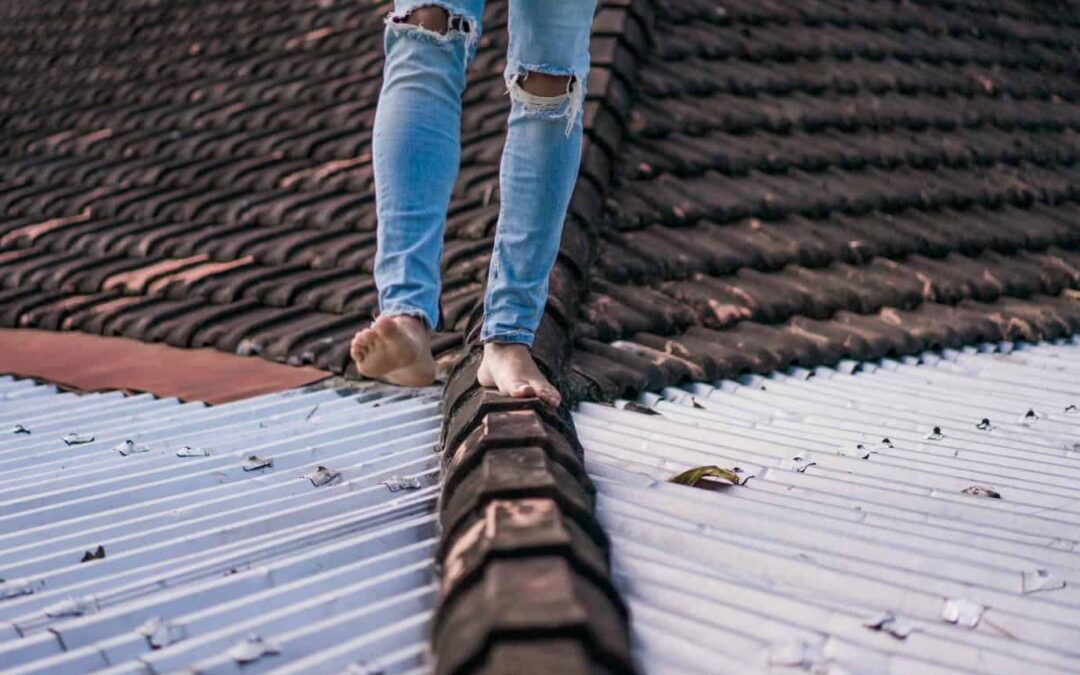When getting your home ready for sale, every detail counts particularly the condition of your roof. While it may not be the first thing that comes to mind, your roof plays a crucial role in shaping buyers’ perceptions and even affects the final selling price. Most homeowners tend to ignore their roofs until a visible problem arises, like a ceiling stain or a leak. However, by that time, the damage might already be severe.
Much like tires on a vehicle, a roof shouldn’t be ignored until it’s deteriorated. According to Mike Montpetit, a leading real estate agent from Cary, North Carolina, proactive maintenance is key. If your roof is aging or showing signs of wear and tear, a professional inspection can save you from headaches down the road especially if you’re planning to sell.
Why Roof Inspections Matter More Than You Think
Roof inspections can give you clarity about the current condition of your roof and help you make informed decisions before putting your home on the market. While a home inspection includes an overview of the entire property, a roofer Kona trusts can provide a more detailed analysis of just the roof’s integrity. Knowing the roof is in good condition will give them greater confidence to make an offer.
Getting a professional roof inspection before putting your home on the market can enhance buyer confidence and trust. They will be more assured about making an offer if they know the roof is well-maintained. If repairs are needed, you can either handle them ahead of time or adjust your pricing strategy accordingly.
Roof Inspection vs. General Home Inspection
While a standard home inspection evaluates the general state of a property covering essentials like plumbing, electrical wiring, heating and cooling systems, and structural integritya specialized roof inspection zeroes in on one of the home’s most vital components: the rooftop, This targeted assessment delves deeper into the roof’s condition, identifying potential issues that a broader inspection might overlook.
According to John Hogan, CEO of Blue Nail Exteriors, numerous roofing issues often lie undetected beneath the surface. Inspectors use visible clues such as mold, missing shingles, or faulty flashing to determine what might be going on underneath. These signs can indicate deeper structural issues that need attention before selling.
Key Areas Roof Inspectors Evaluate
Professional roofing inspectors typically assess four main components during their evaluation: structure, interior, materials, and workmanship.
1. Structural Integrity
The inspector checks for sagging, rust, rotting wood, and signs of water damage. They also inspect vented areas, chimneys, and skylights to ensure they are securely installed and functioning correctly. Proper ventilation and structure help prevent moisture build-up and heat loss, which can cause additional problems over time.
2. Interior Signs
Using a flashlight, inspectors examine ceilings, attics, and walls for evidence of leaks or mold. Water stains, peeling paint, or rot inside the attic are red flags that indicate roof damage. According to Montpetit, these are some of the most common issues discovered during inspections and often go unnoticed until a professional takes a closer look.
3. Roofing Materials
Warning signs include rusted components, deteriorated flashing, cracked caulking, and moss or lichen growth. Even minor material damage can compromise the entire roof if left untreated.
4. Workmanship Quality
Lastly, the inspector assesses how well the roof was installed to ensure it meets quality standards. They’ll look at shingle placement, nail patterns, flashing installation, and overall attention to detail. Subpar workmanship can result in frequent leaks or long-term durability issues. In some cases, layers of old shingles or low-quality materials are discovered, which may not meet current standards.
Different Roof Inspection Methods
Inspectors use various techniques to evaluate roofs, including:
- Visual Inspections: The traditional method where the inspector physically climbs the roof and attic.
- Infrared Scanning: This advanced technique uses heat sensors to detect temperature changes, helping to identify water intrusion or insulation gaps.
- Drone Technology: Drones offer a safer and more comprehensive view of hard-to-reach areas without endangering the inspector.
Each method has pros and cons. While high-tech methods may come with a higher price tag, even a standard visual inspection by a qualified expert can provide valuable insights.
How to Avoid Conflicts of Interest
A potential conflict arises if the same company offers to both inspect and repair your roof. To maintain objectivity, it’s best to separate the inspection from the repair work.
A reliable inspector will send you a detailed report without pushing for additional services. For any necessary repairs, engage an independent contractor. Always confirm their professional qualifications, industry certifications, and liability coverage before authorizing any roofing work.
Roof Certifications: A Bonus for Home Sellers
A roof certification confirms your roof is in good condition for 2–5 years, easing buyer concerns and boosting your home’s appeal. While not mandatory, it can give you a stronger point during negotiations. Repairs must be completed first to qualify.
When to Schedule a Roof Inspection
Schedule an inspection before listing to address issues early and avoid delays. Annual maintenance ensures your roof is market-ready, preventing last-minute surprises that could derail a sale.
Roof Inspection Costs
A basic home inspection typically costs from $130 to $375. Whereas more advanced techniquessuch as drone surveys or infrared thermal imagingcan range from $175 to $650, depending on the scope and technology used.
Can a Bad Roof Affect Mortgage Approval?
Yes. Lenders may deny loans for major roof damage, especially with FHA or VA loans. Repairs may be required before closing.
Final Thoughts: Get Ahead of Problems
Having the roof inspected is one of the wisest decisions a seller can take. It allows you to take control of your home’s narrative and prevents any last-minute deal breakers. Even if repairs are needed, statistics show that homeowners can recoup up to 61% of their investment in roof replacements around $18,000 on average.

Recent Comments